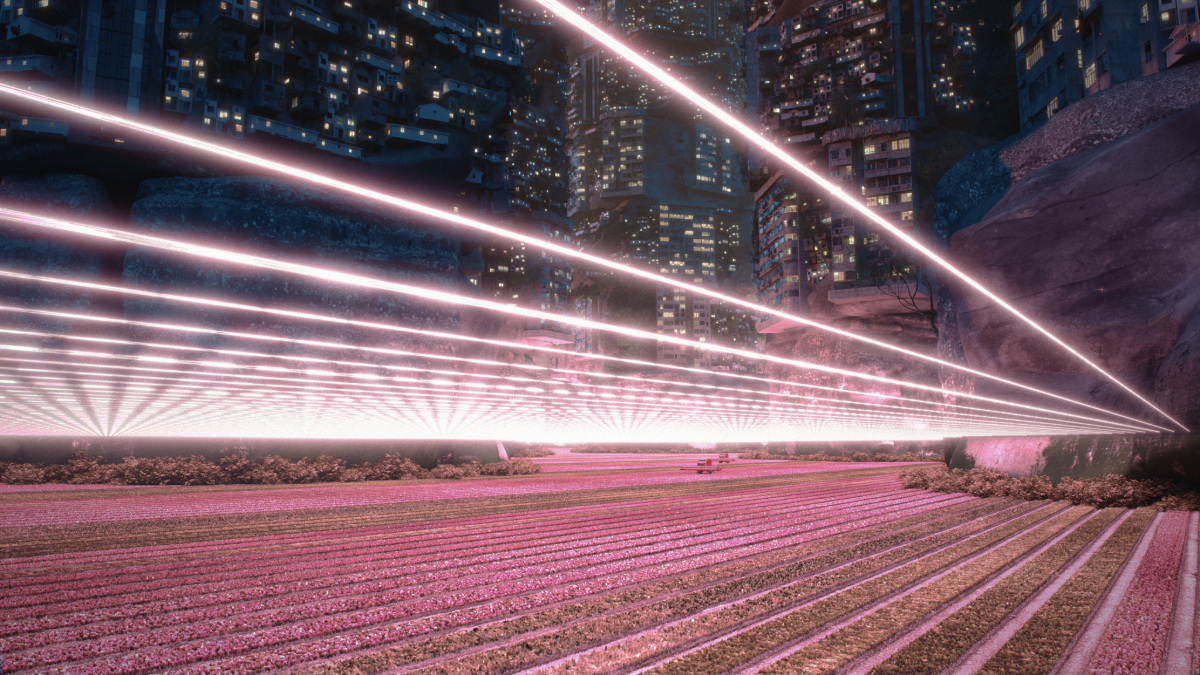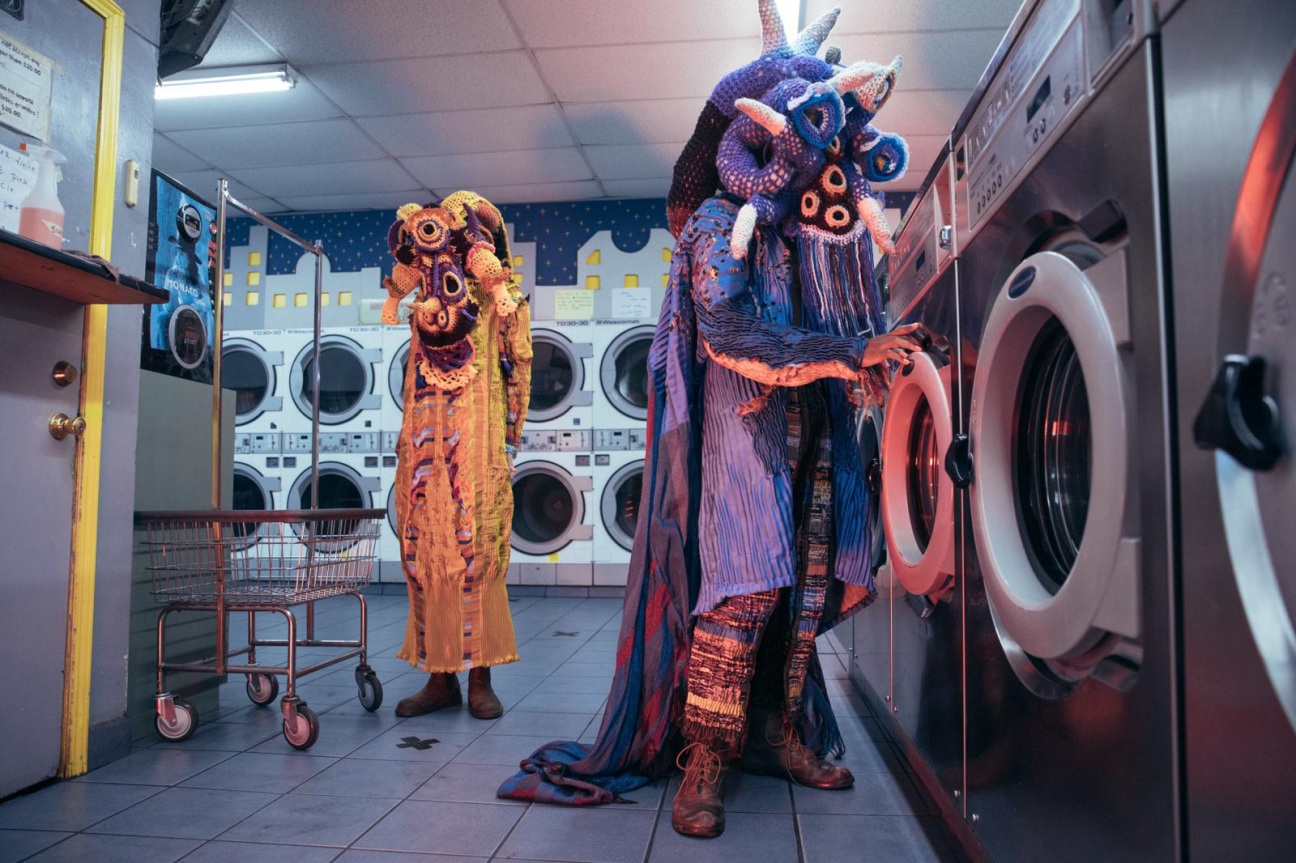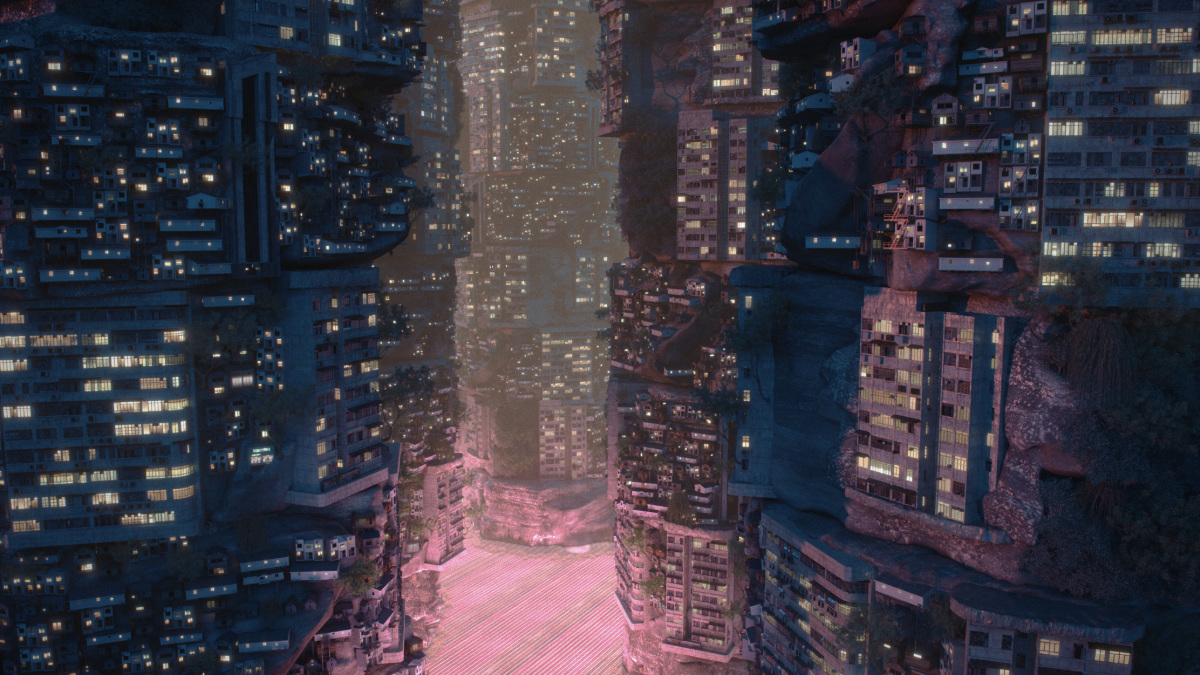
Imagine a world designed for the planet—one city houses 10 billion people, and the rest of the Earth is left an uninhabited nature preserve. In his short film Planet City, architect and director Liam Young renders this idea in vivid, glowing landscapes filled with people native to blended cultures and the natural, animalistic elements that surround them.
For the Getty’s PST ART: Art and Science Collide season, the LA Institute of Architecture (SCI-Arc) presents “Views of Planet City,” a group exhibition emerging from the film that challenges the dystopian narratives often dominating our visions of the future.
“Views of Planet City” offers a more optimistic outlook, where technology and humans work in harmony with nature. In this future, the political and cultural obstacles hindering environmental conservation initiatives are overcome, allowing renewable energy, sustainable agriculture, and rewilding efforts to flourish.
This re-envisioning of urban planning will be unveiled on Sept. 13 at SCI-Arc Gallery and Sept. 14 at the Pacific Design Center Gallery. The ambitious project, led by Young, will also debut interconnected projects by SCI-Arc faculty members Jennifer Chen, John Cooper, Damjan Jovanovic, and Angelica Lorenzi. Works in the exhibition engage with Young's speculative, but scientifically-grounded, vision through films, large-scale models, interactive experiences, a video game simulation, costuming, and more.
Ahead of the opening, CULTURED caught up with Young for a chat about his utopian thought experiment and visions of nature run free.

CULTURED: Planet City—which is a response to Edward O. Wilson’s “Half Earth” proposal—offers a vision of what sustainable urbanization could look like: a city with 10 billion people. When did you first encounter Wilson’s proposal, and why were you moved to respond with your own imagining of a single city?
Liam Young: I first became aware of Wilson’s proposal through an article written in support of the idea by seminal climate fiction author Kim Stanley Robinson. Robinson is known for his speculative future narratives that are rooted deeply in real science, so his endorsement of the idea seemed meaningful. Wilson’s proposal developed “Half Earth” as a plan to stave off mass extinction by devoting half the surface of the Earth completely to nature and consolidating human development to the half that remains.
This is ultimately where the speculation of Planet City begins—but as we started to design and visualize this radical reversal of our planetary sprawl, we soon realized that we could actually go much further. In its most provocative form, if we were to reorganize our world at the intensity of the densest cities that currently exist then Planet City could actually occupy as little as .02 percent of the Earth. We wanted to explore this thought experiment, to imagine coming to a global consensus to retreat from our vast network of existing cities into this one hyper-dense metropolis.
Our imaginary city would allow us to surrender the rest of the globe to nature, to return stolen lands, and rewild the planet. [It would allow for] a new national park of the world, to be visited and tended rather than engineered for extraction. The invisible lines that once divided us would fade beneath a planet of trees.
CULTURED: Despite the dense population of Planet City, the work does not have a sense of a dystopian future but a more sophisticated, hopeful outlook on the potential trajectory of urbanization. How did you arrive at a more positive outlook of this imagined future?
Young: Whether it be projects like Planet City, or the films and TV shows of popular culture, we always use imagined, fictional worlds as sites from which to explore important ideas, not to just sell tickets or create a backdrop for that superhero moment. Fiction is an extraordinary shared language, it is how cultures communicate and disseminate ideas. We are all literate in stories and narratives of imagined worlds that can help us to visualize other possible futures that sit outside of the one that all too often feels inescapable. They are products of culture and in turn, also produce culture. As we write stories, we write the world.
But, our utopian visions of the future are still haunted by the failed ideals of ’60s and ’70s environmentalism. Unfortunately, these models that foreground local action and small individual gestures are no longer fit for purpose; they just don’t scale against the enormity of the climate crisis we now face. Meanwhile, the planetary scale visions we do see in popular culture are typically industrial and dystopian, the work of the Bond villain or the faceless mega-corporation. Density is seen as being dirty or congested, or sufficiently advanced technology comes with a bland, globalized culture that flattens cultural diversity.
In this moment we desperately need new planetary imaginaries that meet the daunting scale and complexity of the challenges we now face. So we embrace the latest renewable energy research, and we work with the world’s leading climate scientists and political and economic theorists to visualize their research at the necessary scale.

CULTURED: “Views of Planet City” includes work from fellow SCI-Arc faculty members. How did you approach this collaborative effort, and what was it like to see their responses to your project?
Young: Planet City has always been a collaborative work of multiple voices and cultures supported by an international team of acclaimed environmental scientists, theorists, and advisors. It is exciting to involve more partners from SCI-Arc faculty in the project. By definition, a city is a condition of multiple authors and each of the faculty have taken their own position on the Planet City thought experiment.
I gave them an invitation to inhabit this imaginary world, to dwell within and find their own stories. It has been incredible to see all their various interests and ways of working play out within this imaginary context. Each of the artists has brought their own medium to bear in a way that I found both challenging and surprising. Some are working through performance and community action, others through film and animation, others through video games.
Each of their projects will come together to create a more nuanced portrait of different aspects of the city including how it is seen from space, how community action enables the fabric of the city to grow across time, and the systems and rituals of rewilding that will take place outside of the city boundary.
CULTURED: What are you hoping that people who see “Views of Planet City” take away from the exhibition?
Young: Planet City in the end is not a proposal, it is a thought experiment that shows us that we don’t have to trample so hard across the earth. If we can imagine these systems working at the scale of 10 billion, then the only thing standing in the way of rewiring and consolidating our existing cities is ourselves, our own biases, blindspots, politics, and prejudices.










 in your life?
in your life?

